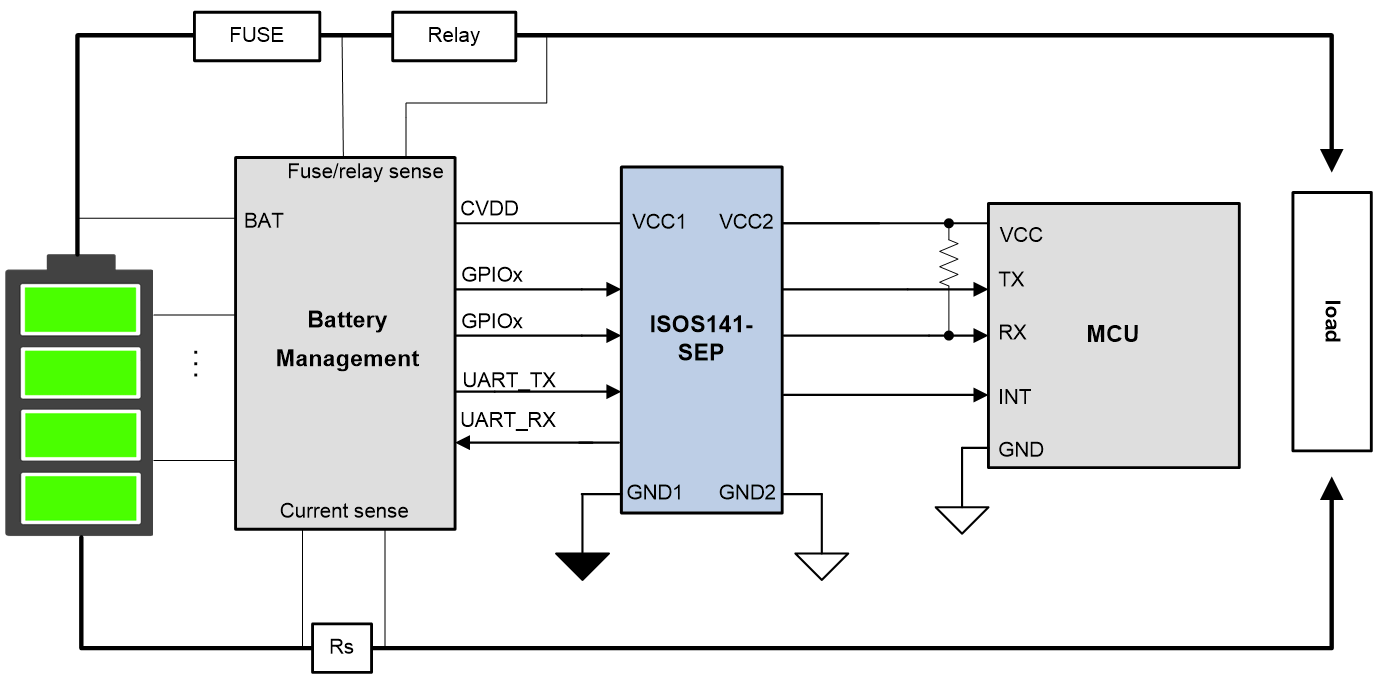SSZT128 october 2021 ISOS141-SEP
Sadia Khan
Today’s space race isn’t just about landing on new worlds; it’s a race to better connect our own, through global broadband connectivity powered by mega constellations known as low Earth orbit (LEO) satellites. Just like terrestrial applications, LEO satellites require signal and power isolation to enhance system integrity and performance by preventing ground potential differences while improving immunity to noise.
Designers have traditionally employed isolation technologies such as optocouplers and pulse transformers to isolate signals and power in spacecraft applications. The limitations of these technologies can create challenges for isolated subsystems, however. For optocouplers, these limitations include poor radiation tolerance, limited electrical performance and limited channel count per package, while pulse transformers suffer from larger footprints and can be difficult to design with.
As an alternative, radiation-tolerant, SiO2 digital isolators in plastic packaging like the ISOS141-SEP quad-channel digital isolator can meet the radiation performance and immunity requirements of subsystems for LEO applications through its single-event latchup (SEL) and single-event dielectric rupture (SEDR) immunity to an LET = 43 MeV·cm2/mg, Total Ionizing Dose (TID) characterization and RLAT to 30 krad(Si), and Displacement Damage (NDD) characterization to 1 × 1012 n/cm2 (1-MeV equivalent).
| Solve isolation design challenges for LEO satellites | |

|
Learn how to isolate signals with digital isolators in LEO satellite applications with the application brief, “How to Isolate Signals with Digital Isolators in Emerging LEO satellite applications." |
From a signal isolation perspective, the ISOS141-SEP can provide higher continuous working voltages of 600 V, faster data rates of 100 Mbps, low propagation delay and channel-to-channel skew of 10.7 ns and 4 ns max, and provides 100 kV/μs of CMTI. This isolation performance can increase signal isolation in a variety of spacecraft applications, including power systems, battery management systems (BMS), as shown in Figure 1, and communications payloads. Also, the smaller footprint of this device, for example the 4.90-mm x 3.90-mm footprint of the ISOS141-SEP, also helps simplify system design while reducing weight.
 Figure 1 Isolated UART and GPIO Signals in Spacecraft BMS Using the ISOS141-SEP Digital Isolator.
Figure 1 Isolated UART and GPIO Signals in Spacecraft BMS Using the ISOS141-SEP Digital Isolator.Digital isolators in plastic packages can isolate signals in multiple space applications, from power systems to communication payloads. They help simplify designs, provide radiation tolerance and deliver a multichannel solution in a single package, while maintaining high isolation integrity compared to incumbent solutions. These advancements will play a role in the progression of LEO satellites connecting our world.
Additional Resources:
- Learn more about space-enhanced plastic packaging in the technical article, "Space Enhanced Plastic gives designers a new solution for emerging low-Earth orbit commercial applications."